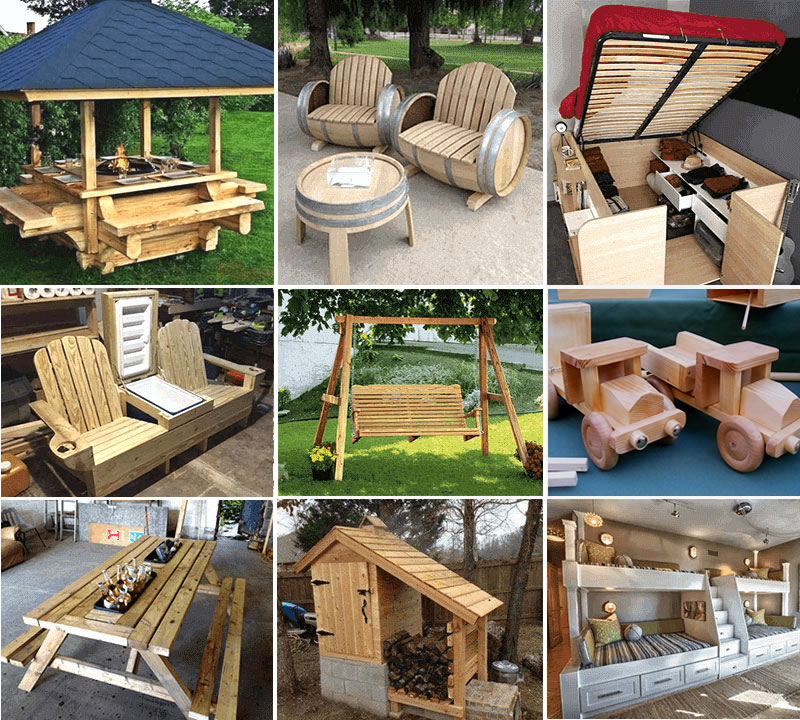The Art of Japanese Woodworking Joints: Precision, Strength & Elegance
Whether you’re a hobbyist or a seasoned craftsman, mastering Japanese woodworking joints is a gateway to a deeper, more refined woodworking experience. Known for their interlocking precision and artistic design, these joints have been used for centuries in temples, furniture, and architecture—all without nails, screws, or glue.
In this post, we’ll explore the most common and fascinating Japanese woodworking joints, why they’ve stood the test of time, and how you can start incorporating them into your own projects.

👉 Click here to unlock 16,000+ DIY woodworking plans now
Why Japanese Woodworking Joints Are Special
Japanese joinery is as much a philosophy as it is a technique. It emphasizes:
- Craftsmanship over convenience
- Strength without hardware
- Aesthetic harmony with nature
Key takeaway: Japanese woodworking joints combine functionality, beauty, and durability—making them perfect for woodworkers who value tradition and precision.
Common Types of Japanese Woodworking Joints
🔩 1. Kigumi (Interlocking Joints)
These are used to connect beams and frameworks, especially in traditional architecture.
- No nails or glue required
- Excellent for weight-bearing structures
- Highly decorative and symbolic
🪚 2. Kanawa Tsugi (Half-Lap Scarf Joint)
Used to extend the length of wooden beams.
- Provides both strength and flexibility
- Often hidden for a clean aesthetic
- Ideal for long-span wooden structures
🧩 3. Shachi-Sen (Dovetail Keys)
Used to hold parts of timber together across grain direction.
- Similar to Western dovetails but more intricate
- Enhances shear strength
- Often used in flooring and cabinetry
🪵 4. Kumi-ki (Puzzle Joinery)
Artful joints that fit together like puzzles, often in 3D.
- Visually stunning
- Can be disassembled and reassembled
- Symbolize harmony and unity
🔨 5. Ari Tsugi (Tapered Finger Joint)
Named for its resemblance to an ant’s waist (“ari” in Japanese), this joint is tapered to lock securely.
- Used in beam extensions
- Easy to align and hammer into place
- Strong under both tension and compression
🛠️ Ted’s 16,000 Woodworking Plans – Why You’ll Love It:
- 📚 16,000+ Ready-to-Build Projects – From small crafts to big furniture!
- ✂️ Step-by-Step Instructions – No guesswork, just follow and build.
- 🧰 Perfect for All Levels – Beginner to expert, everyone’s covered.
- 💰 Turn Projects into Profit – Build & sell your creations easily!
- 🔥 Limited-Time Deal – Grab it now at 90% OFF!


Tools Needed for Japanese Joinery
To craft Japanese woodworking joints, you’ll want to invest in traditional tools:
- Ryoba saw – dual-edge for crosscuts and rip cuts
- Kanna (hand plane) – for precision surface smoothing
- Nomi (chisels) – for carving out exact joinery pockets
- Marking gauges and ink lines – for razor-precise layout
Pro Tip: Japanese joinery demands patience and precision. Practice on scrap wood before committing to final materials.
Benefits of Using Japanese Woodworking Joints
- ✅ Incredible durability—many joints hold up for centuries
- ✅ Eco-friendly—no metal fasteners or synthetic adhesives
- ✅ Visual beauty—clean, geometric joinery that becomes a focal point
- ✅ Disassemblable—ideal for furniture that needs to be moved or stored
Internal Resource
Want to learn how these techniques compare to Western methods? Check out our guide to types of woodworking joints for a full breakdown.
External Resource
For advanced diagrams and historical context, visit the Takenaka Carpentry Tools Museum, one of Japan’s premier institutions for traditional woodworking.
Getting Started with Japanese Joinery
If you’re ready to explore this traditional craft, start with simple joints like:
- Kanawa Tsugi – great for beginners
- Ari Tsugi – builds muscle memory for more complex joints
- Shachi-Sen – ideal for visual flair and precision practice
Key takeaway: Begin small, master the basics, and gradually move to more intricate joints as your skill improves.
Conclusion: Embrace the Craft of Japanese Woodworking Joints
Learning Japanese woodworking joints connects you to a centuries-old tradition that values patience, precision, and harmony with nature. It’s not just woodworking—it’s an art form.
Ready to Craft Like a Master?
Start your journey into Japanese joinery today. Sign up for our newsletter to receive step-by-step tutorials, tool recommendations, and joinery plans right in your inbox.
Ready to build stunning woodworking projects with ease? Click Here to Get TedsWoodworking Now!
